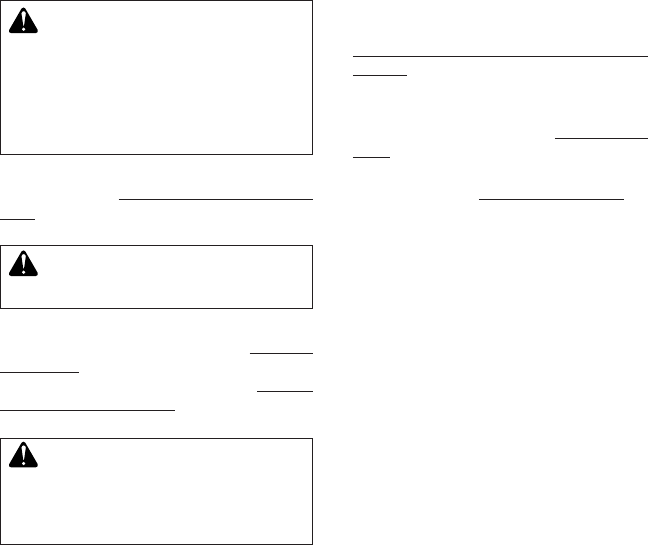
www.fmiproducts.com
116646-01J 31
CLEANING AND MAINTENANCE
Continued
CAUTION: Wear gloves and
safety glasses while handling
or removing broken glass. Do
not remove if glass is hot. Keep
children and pets away from
glass.
If glass has been broken, carefully remove
glass door (see Removing/Replacing Glass
Door, page 23). Vacuum all glass pieces with
a shop vac.
CAUTION: Do not vacuum if
pieces are hot.
Use only the tempered glass door replace-
ment intended for this replace (see Replace-
ment Parts, page 36 for detail on ordering).
No substitutions may be made. See Remov-
ing/Replacing Glass Door, page 23 for instruc-
tions for replacing glass door.
WARNING: Do not operate
replace with the glass door
unlatched, removed, cracked
or broken.
PILOT AND BURNERS
• Remove ember material before cleaning
burners and replace when cleaning is
complete.
• Burner and controls should be cleaned
with compressed air to remove dust, dirt
or lint.
• Use a vacuum cleaner or small, soft bristled
brush to remove excess dust, dirt or lint.
LOGS
• If you remove logs for cleaning, refer to
Installing Logs, Lava Rock and Glowing
Embers, page 25, to properly replace logs.
• Use a vacuum cleaner to remove any
carbon buildup on logs.
• Replace log(s) if broken. See Replacement
Parts on page 36.
•
Replace ember material periodically
as needed. See Replacement Parts on
page 36.
VENTING SYSTEM
Conduct annual inspection of venting system
following these guidelines:
1. Check areas of venting system that are
exposed to the weather for corrosion (rust
spots or streaks and, in extreme cases,
holes). Have these items replaced im-
mediately by a qualied service person.
2. Remove the vent cap and shine a ash-
light into the vent. Remove any foreign
material.
3. Check for evidence of excessive con-
densation. Continuous condensation can
cause corrosion of caps, pipes and ttings
and can be caused by having excessive
lateral runs, too many elbows or exterior
portions of the system being exposed to
cold weather.
4. Inspect joints to verify that no pipe section
or tting has been disturbed and loos-
ened. Check mechanical supports such
as wall straps for rigidity.


















